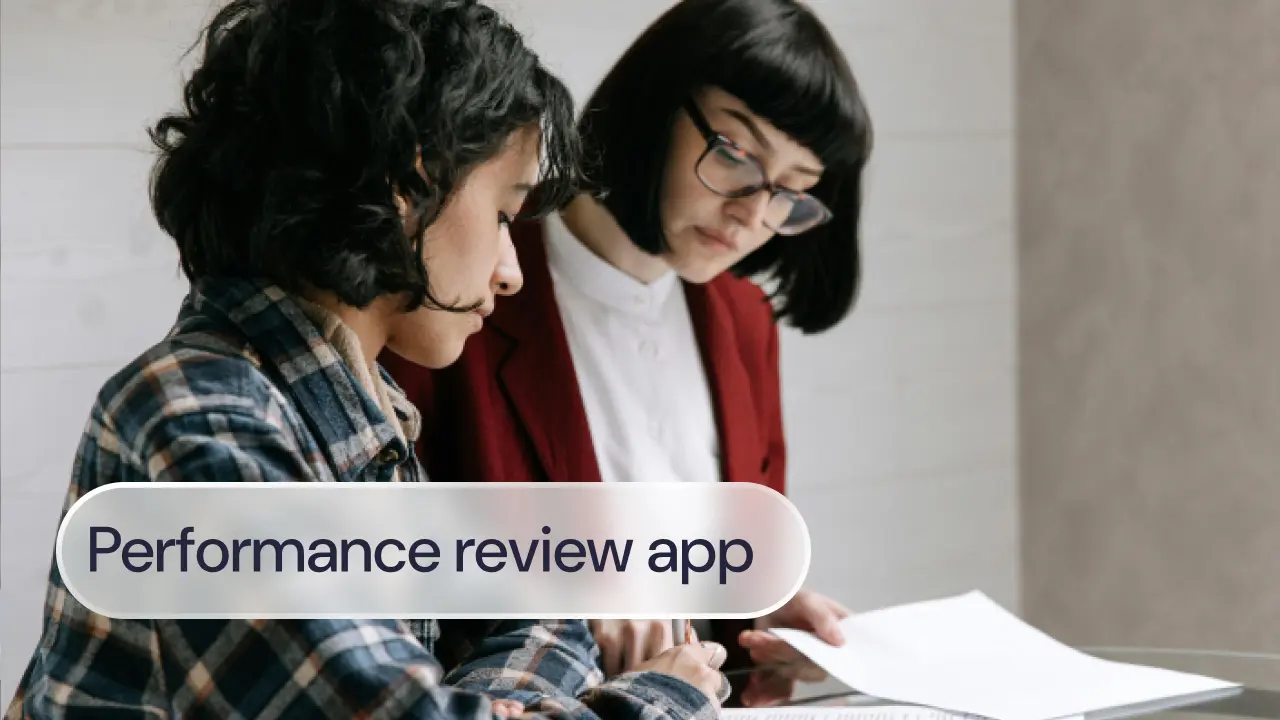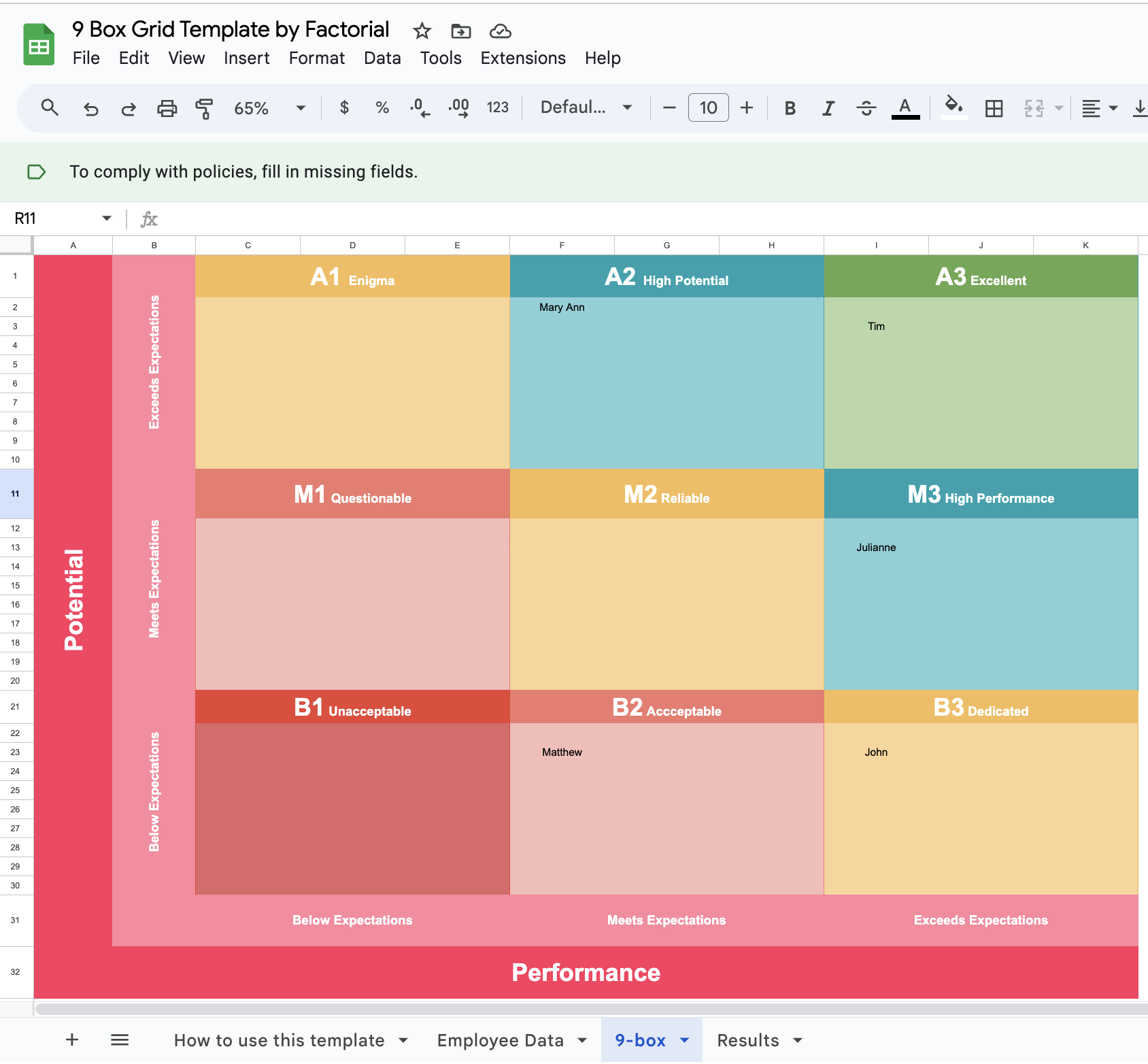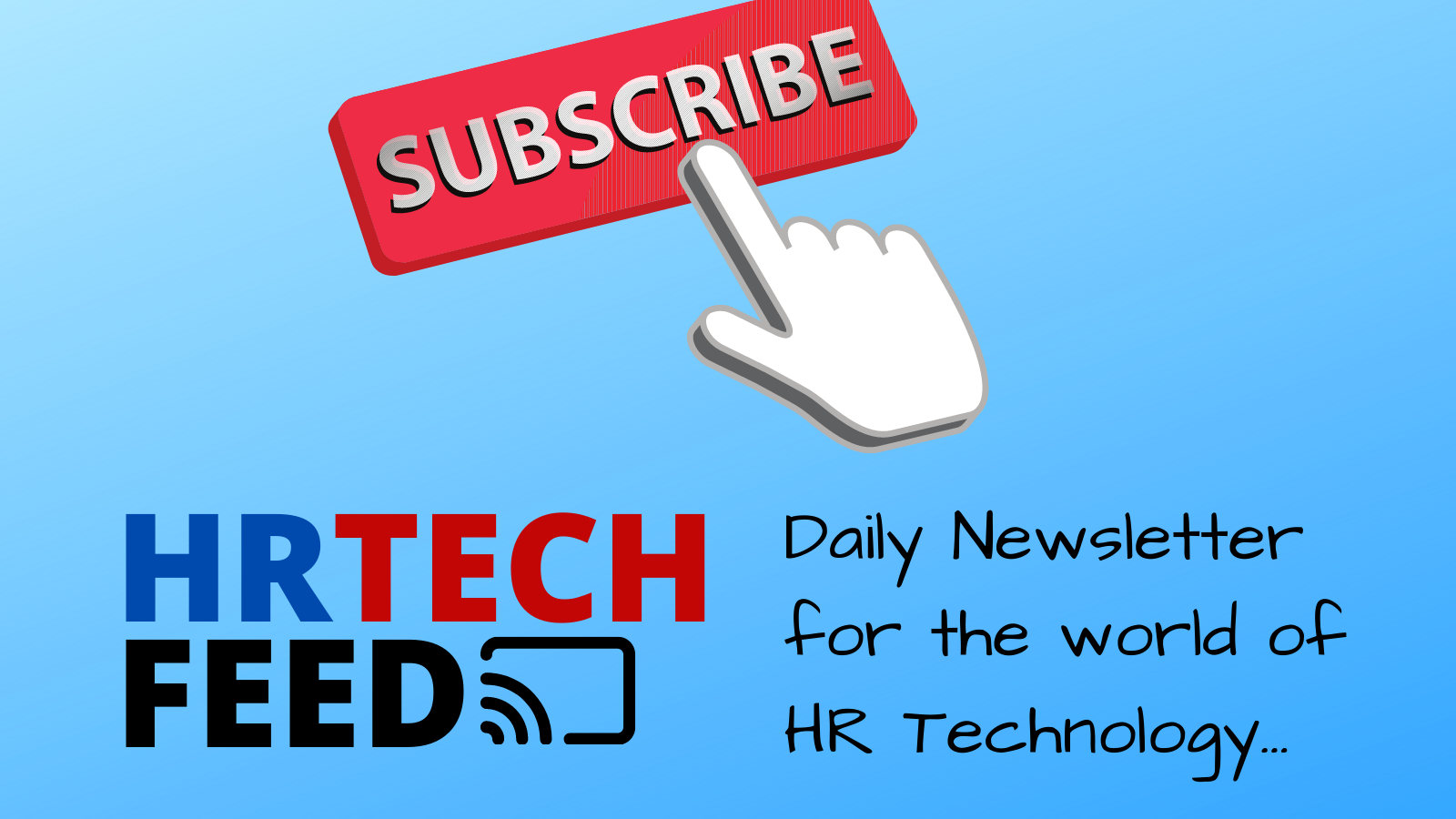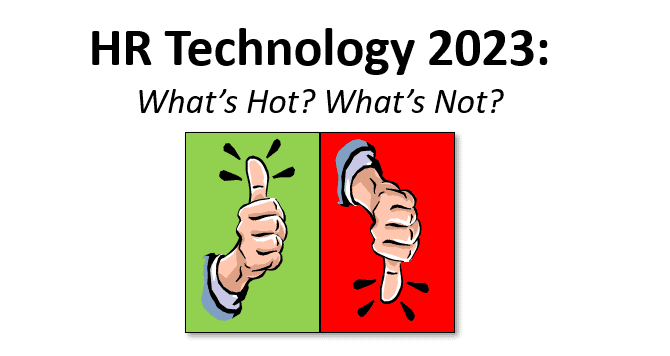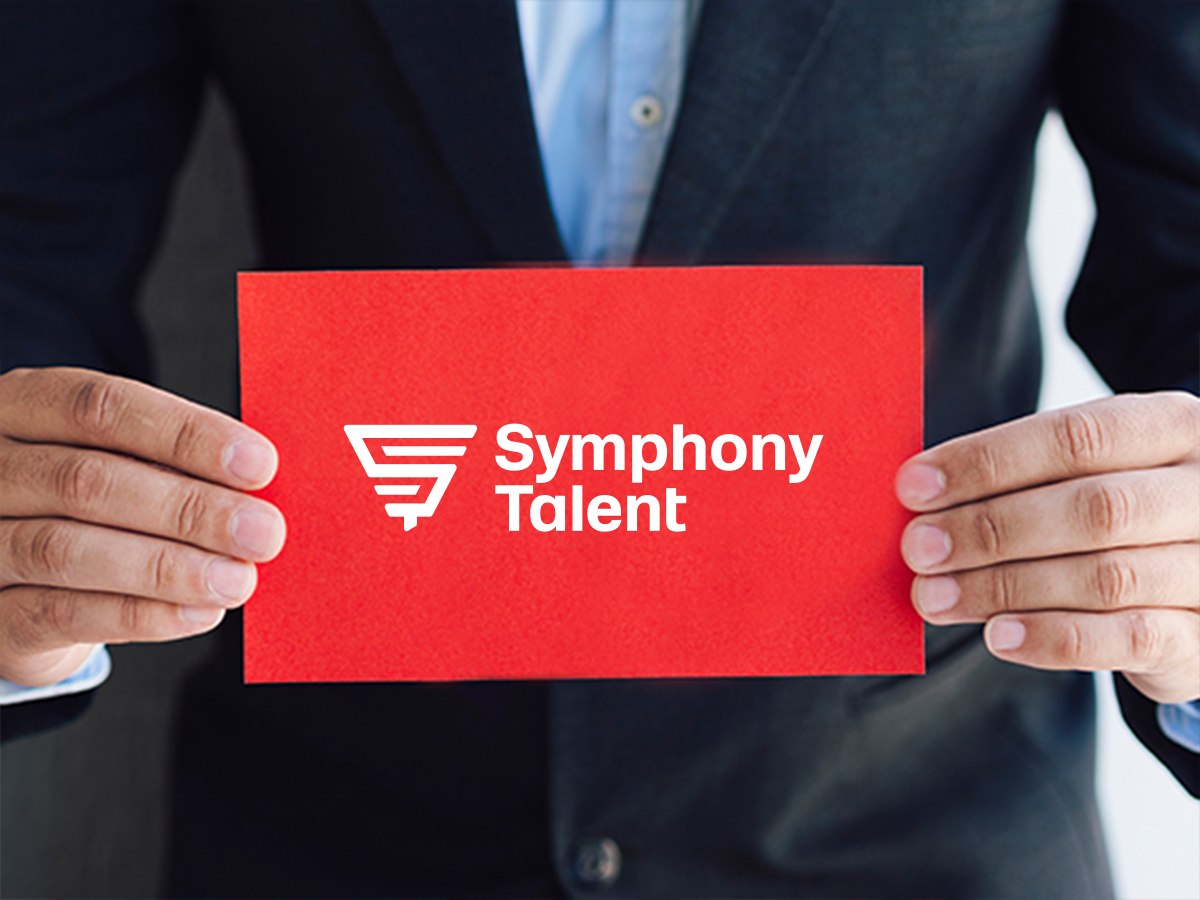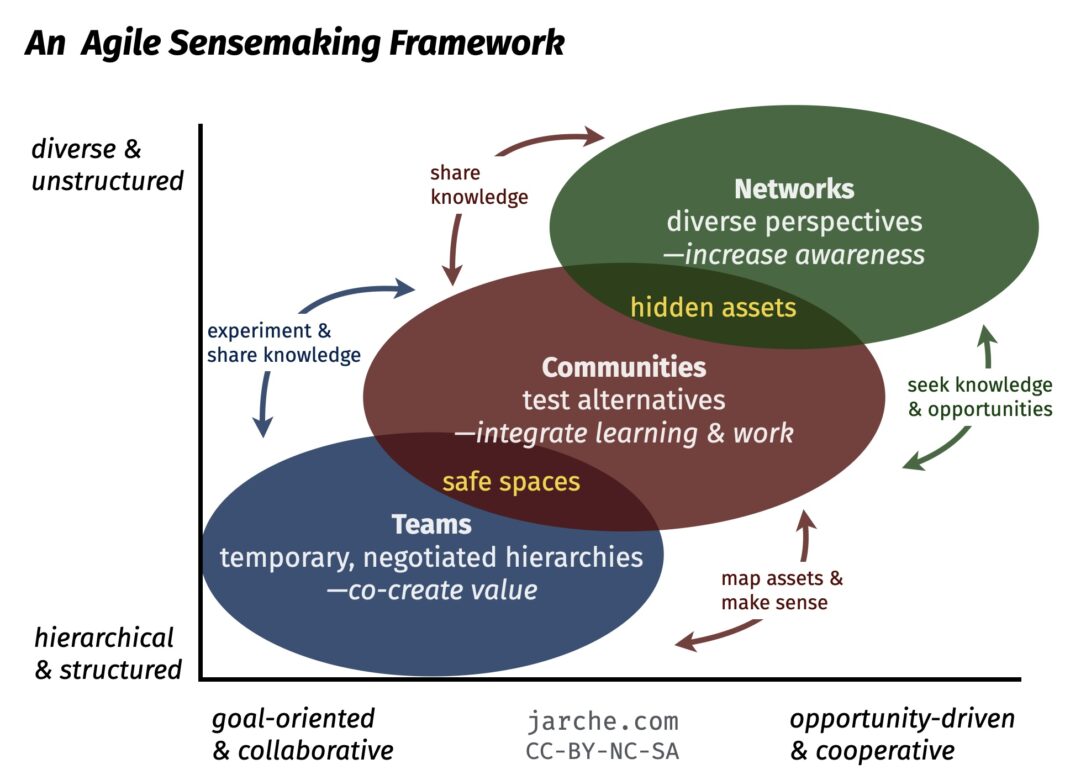Running a software company means managing tight deadlines, shifting priorities, and multiple projects at once. But one constant is the need to help employees grow. Performance review apps make it easier to track goals, give feedback, and keep teams aligned with company objectives.
Many small and medium-sized businesses still use spreadsheets and email threads to manage reviews. These outdated methods are time-consuming and often lead to missed feedback or inconsistent results.
Modern performance review apps solve this by bringing everything into one platform. These apps help managers collect and analyze feedback, track progress, and make data-driven decisions about employee performance. Some even use AI to summarize comments, spot trends, and suggest ways to improve communication.
In this article, we’ll go through what performance review apps are, how they work, and how they compare to traditional methods. We’ll also look at the top performance review apps for software companies in 2025 so you can find the best fit for your business.
What Are Performance Review Apps?
Performance review apps are digital tools that help managers and HR teams evaluate employee performance in a structured, consistent way. Instead of relying on spreadsheets or scattered notes, these apps bring everything together including performance goals, giving feedback, and progress tracking into one easy-to-use platform.
For software companies, where projects move fast and collaboration is key, performance review apps help teams stay organized and connected. They make it simple to track progress on development goals, review team performance, and keep employees motivated in a busy work environment.
Unlike traditional reviews, which can feel rushed or inconsistent, performance management software encourages a culture of continuous feedback. Employees and managers can share updates regularly, making reviews more meaningful and less stressful.
For small and medium-sized software businesses, the benefits go beyond organization.
A good performance review app can:
- Keep everyone aligned with clear, trackable goals
- Simplify feedback with ready-to-use templates and reminders
- Use analytics or AI to summarize insights and highlight growth opportunities
- Store performance data securely for easy access and reporting
When used effectively, these tools transform performance reviews from a once-a-year task into an ongoing process that supports employee development, stronger communication, and long-term business growth.
How Performance Review Apps Work
Once you understand what performance review apps are, it helps to see how they actually work. At their core, these tools take the manual steps of a performance review like scheduling a performance review cycle, collecting feedback, and analyzing results, and turn them into a smooth, automated process.
Here’s how most performance management software works for software companies:
1. Set Up Review Templates and Goals
Managers or HR teams start by creating review templates and setting clear goals before each performance review period. Many apps offer customizable forms for annual reviews, 360° feedback, or one-on-one check-ins. You can adjust questions, rating scales, or skill areas to match your company’s needs.
For software teams, this might include metrics like code quality, sprint efficiency, or collaboration. Once set up, these templates can be reused each review cycle.
2. Gather Feedback Automatically
Instead of chasing people for input, performance review apps send automated reminders to employees, peers, and managers. Everyone completes their reviews using self-appraisals, peer feedback, or manager evaluations directly in the platform. This keeps everything organized and ensures a consistent process across teams.
3. Analyze and Summarize Results
Many of the top performance review apps use AI to summarize feedback, spot trends, and highlight common themes. For example, AI might notice repeated mentions of strong teamwork or flag areas that need improvement, like time management.
Some tools even generate short reports or suggest next steps, helping managers give data-backed feedback in minutes instead of hours.
4. Deliver Feedback and Track Progress
Once results are ready, managers can hold review meetings and create development plans. Dashboards and timelines make it easy to track progress over time, so you can see how employees improve between review cycles.
5. Continuous Feedback and Improvement
The best performance review apps go deeper than yearly evaluations. They support regular check-ins, quick surveys, and real-time updates, keeping communication open and goals on track. For software companies, this helps teams stay agile and address challenges before they grow.
When used consistently, performance review apps turn a stressful, time-consuming process into a structured system that improves employee engagement and overall performance using data.
Traditional Reviews vs. Performance Review Apps
Many software companies still rely on traditional performance reviews with spreadsheets, scattered emails, or paper forms. While these methods can work, they have major drawbacks:
- Time-consuming: Managers spend hours tracking feedback, sending reminders, and compiling results.
- Inconsistent: Without a central system, reviews can vary by team or manager, leading to bias or performance gaps.
- Hard to analyze: It’s difficult to spot trends or measure progress across the company.
Performance review apps solve these problems by digitizing the entire process. Instead of juggling files and emails, managers get a single platform to:
- Automate feedback collection and reminders
- Standardize evaluations across teams
- Track performance over time with dashboards and reports
- Use AI or analytics to identify trends and insights
For software companies, this means less admin work, fairer reviews, and more meaningful conversations with employees. Instead of stressing over the process, managers can focus on helping their team grow and achieve company goals.
| Category | Traditional Review Methods | Performance Review Apps |
|---|---|---|
| Process | Manual spreadsheets, emails, or paper-based; managers must track everything by hand. | Automated workflows with templates, reminders, and dashboards all in one place. |
| Time Investment | Time-consuming; each review cycle can take hours or even weeks. | Saves time with automation and centralized data — reviews can be completed faster. |
| Accuracy & Consistency | Prone to human error and inconsistencies between reviewers. | Standardized templates ensure fair and consistent evaluations across teams. |
| Visibility & Tracking | Limited visibility; hard to see who has completed reviews or track past data. | Real-time dashboards provide full visibility at every stage. |
| Feedback Quality | Often vague, delayed, or missing context. | AI summaries highlight key themes and give actionable insights instantly. |
| Data Insights | Little to no analytics; insights are usually anecdotal. | Built-in analytics show trends, skill gaps, and top performers using real-time data. |
| Scalability | Becomes unmanageable as the team grows. | Easily scales for growing SMBs and large software teams. |
| Employee Engagement | Feels like a one-time task, not a growth opportunity. | Encourages continuous feedback and learning, boosting engagement and retention. |
Top 5 Performance Review Apps in 2025 for Software Companies
Performance review apps have become essential. The best tools in 2025 are more than simple surveys. They connect performance, growth, and engagement into one smooth process. Here are some of the top apps for SMBs:
1. Factorial
Best for: Small to mid-sized software companies in need of an all-in-one HR and performance solution.
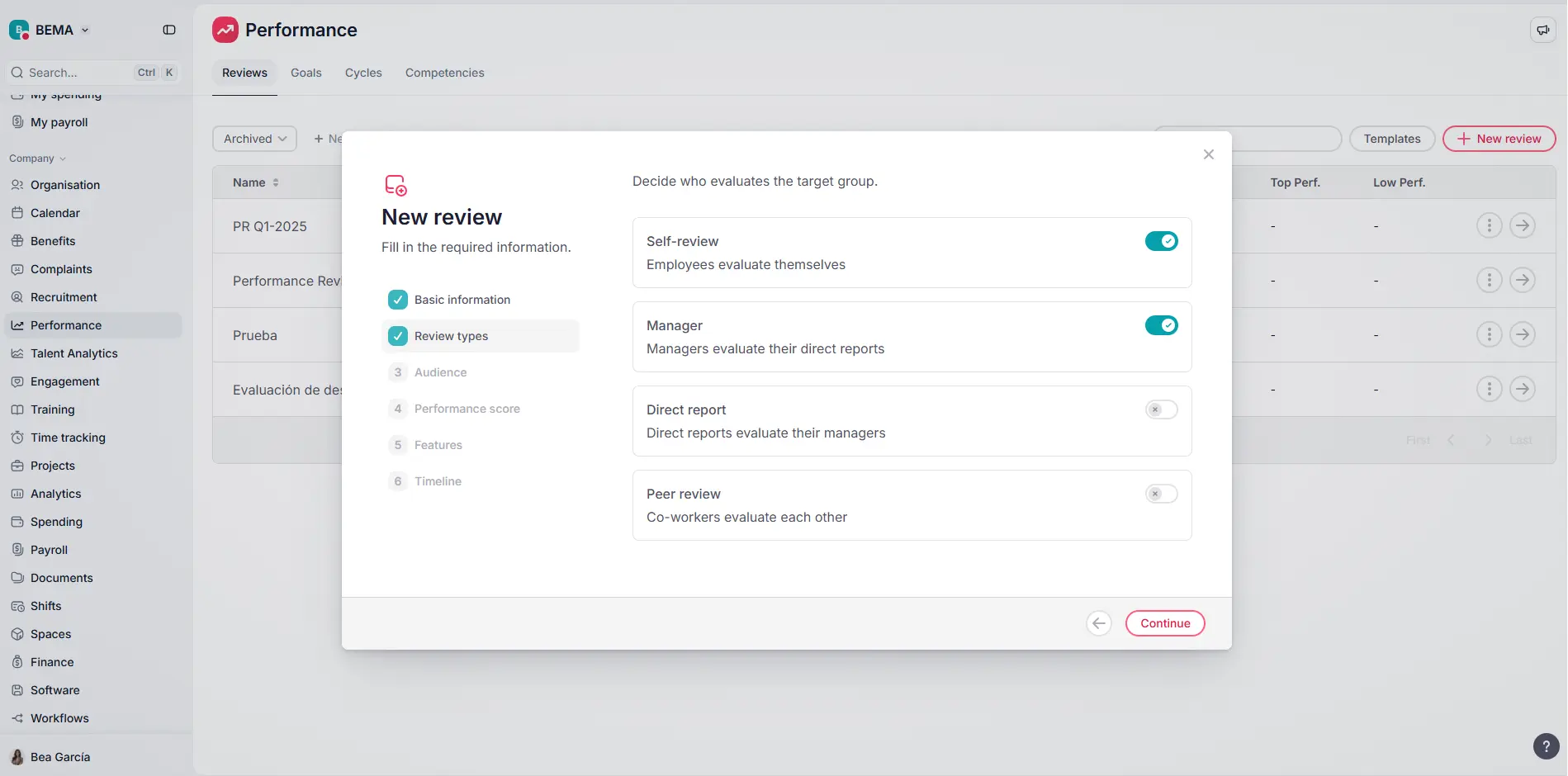
Overview: Factorial is easy-to-use business management platform with performance management built in for growing teams. As an all-in-one platform it helps you manage performance reviews and give feedback that drives real results. Managers can use customizable review templates, 360° feedback, and AI summaries to spot patterns and make feedback more meaningful.
What makes Factorial unique is how it connects reviews with other HR tools like time tracking, payroll, onboarding, and training. When managers identify an area for improvement they can link that feedback to goals and follow-up actions right in the system.
By turning feedback into clear, trackable steps, Factorial helps managers save time, support growth, and build stronger, more motivated teams.
Key Features:
- Customizable review templates for developers, project managers, or any role
- 360° feedback from peers, managers, and self-assessments
- Automated workflows and reminders
- AI-powered summaries highlighting trends and insights
- Integration with goals, time-off tracking, and training plans
Why It Stands Out: Factorial is intuitive and accessible, perfect for SMBs without a full HR department. For software companies, it links performance data to real outcomes like faster delivery or better product quality.
Pricing: Starts around $5 – $6 per employee per month.
2. Lattice
Best for: Mid-sized software companies focused on OKRs and continuous development.
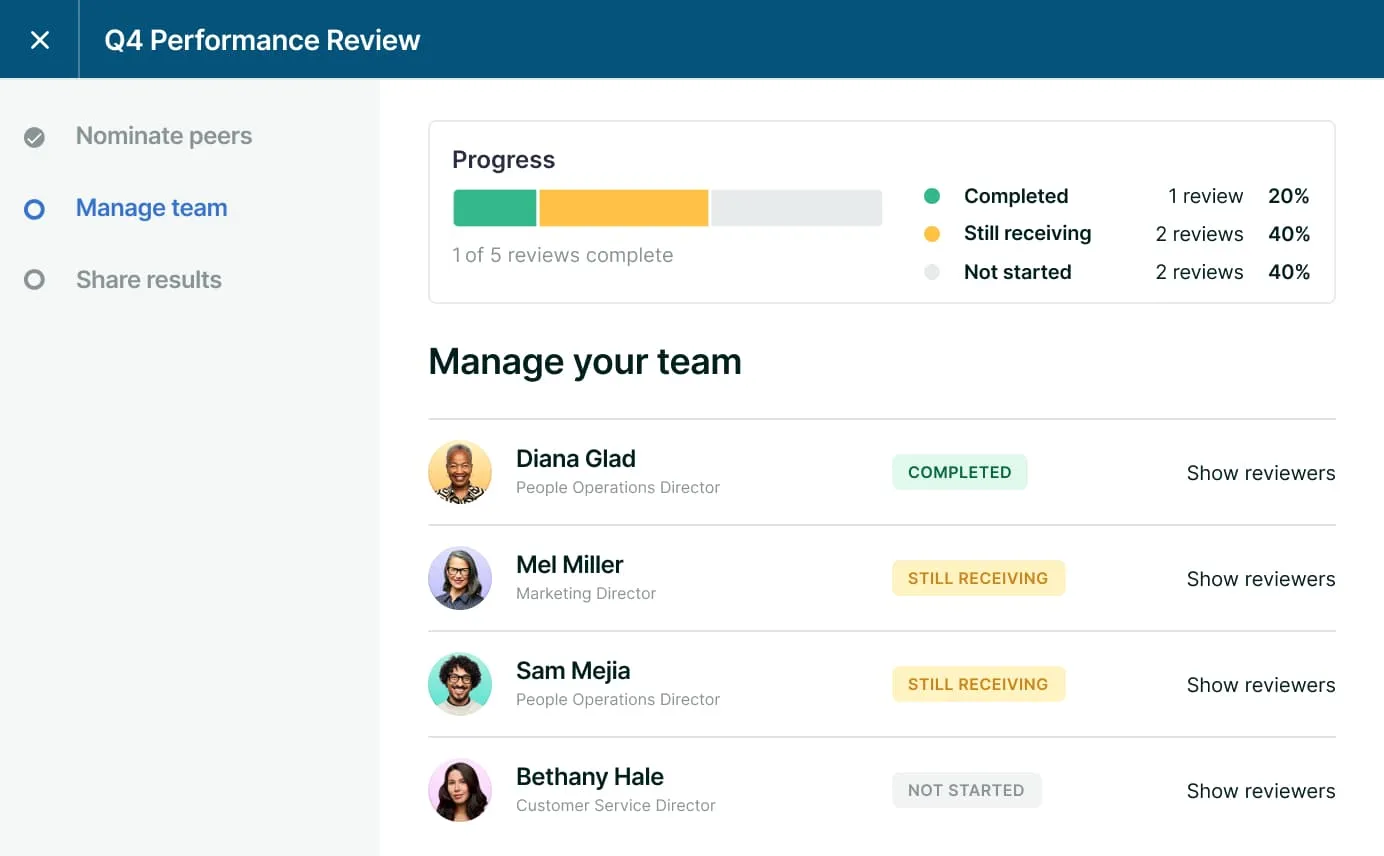
Overview: Lattice combines performance reviews, goal tracking, and engagement surveys. It helps software teams align individual work with company objectives.
Key Features:
- Performance reviews and self-assessments
- Goal and OKR tracking
- Real-time feedback and praise
- Employee engagement surveys
- AI-driven analytics to identify strengths and areas for improvement
Why It Stands Out: Lattice is perfect for continuous alignment between individual goals and team or company OKRs, like improving release quality or reducing bugs.
Pricing: Starts around $11 per user per month.
3. PerformYard
Best for: Companies needing flexible, customizable review cycles.
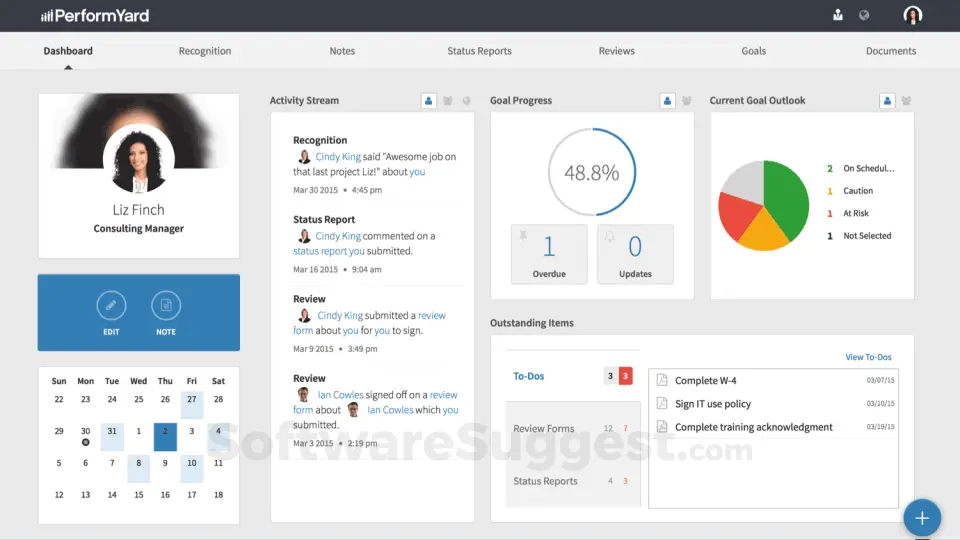
Overview: PerformYard lets SMBs design review processes that fit their business using annual, quarterly, or project-based cycles.
Key Features:
- Custom templates and review cycles
- 360° feedback and self-assessments
- Goal management and tracking
- Automated reminders and scheduling
- Performance analytics dashboards
Why It Stands Out: Great for software teams with frequent project-based evaluations. Managers can track short-term deliverables, gather peer input, and compare performance across teams.
Pricing: $5 – $8 per user per month.
4. Connecteam
Best for: Remote or hybrid software teams needing mobile-first reviews.
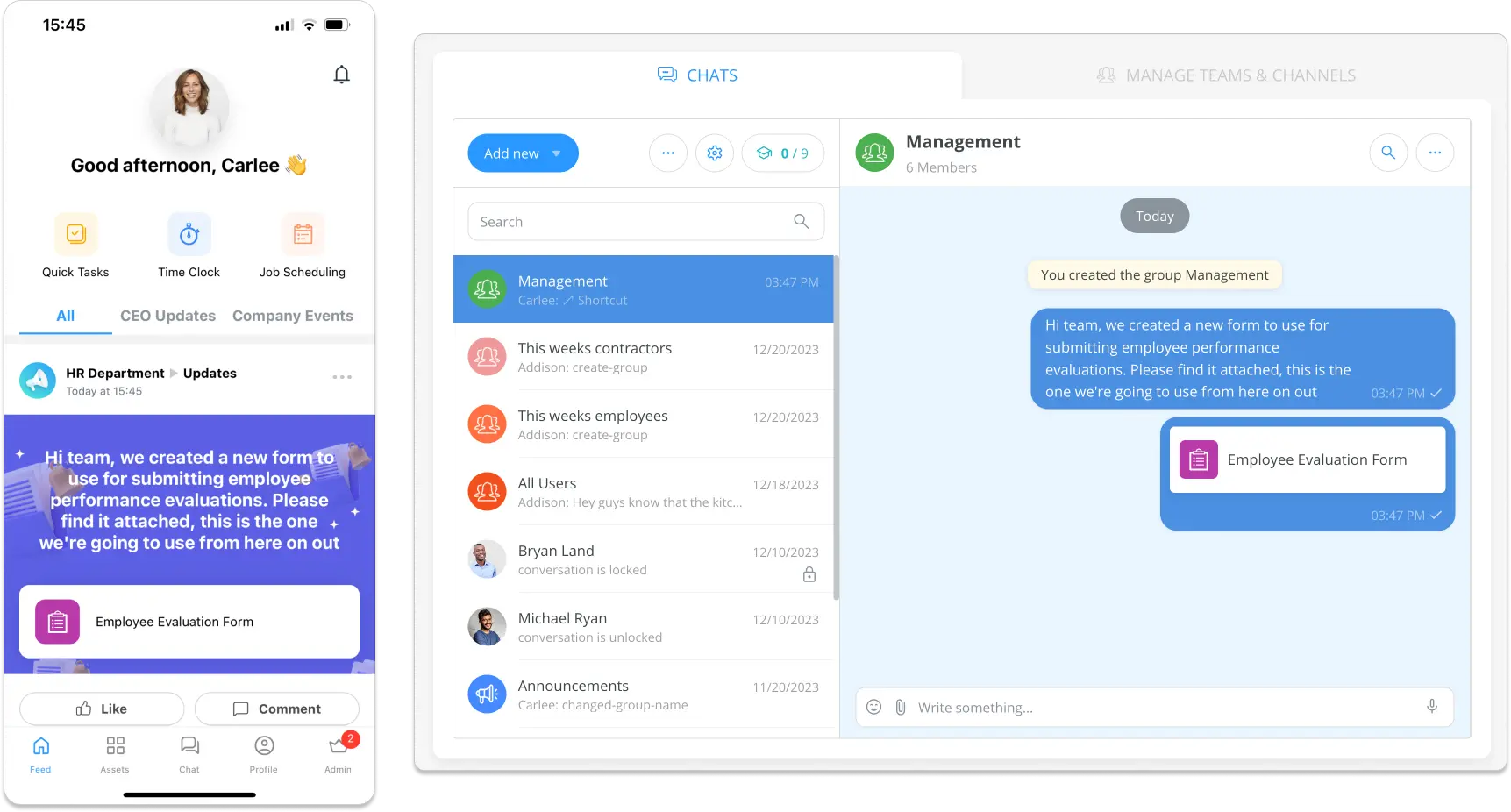
Overview: Connecteam is built for distributed teams. Managers can collect feedback, track goals, and stay connected no matter where employees work.
Key Features:
- Mobile-friendly performance reviews
- Real-time feedback and check-ins
- Automated notifications and follow-ups
- Built-in communication and chat tools
- Task and time tracking integrations
Why It Stands Out: Perfect for developers, QA testers, or support staff working remotely. Reviews can be completed on any device, and managers can monitor progress easily.
Pricing: Free tier for small teams. Paid plans start at $5 per user per month.
5. Leapsome
Best for: Tech-driven organizations linking performance with learning and engagement.
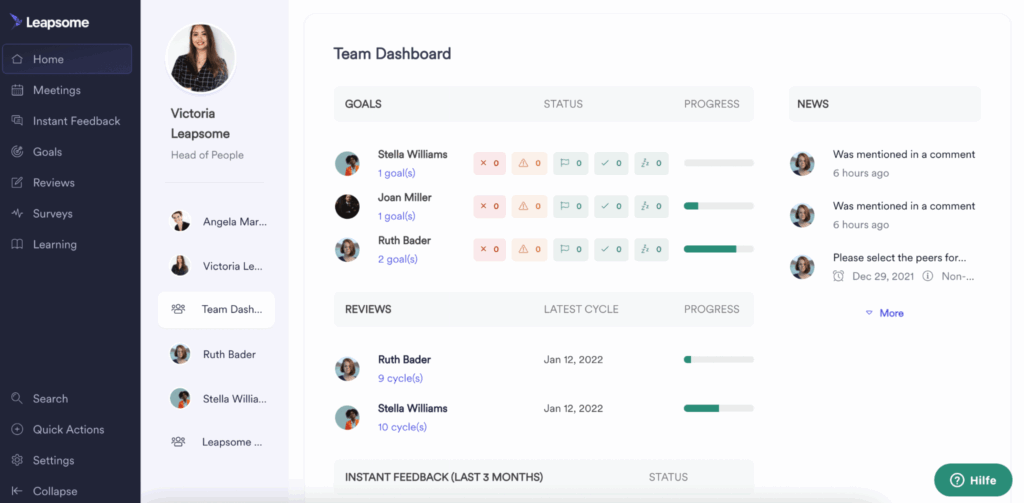
Overview: Leapsome combines performance management, learning, and engagement in one platform. It helps software teams turn feedback into action.
Key Features:
- Customizable review cycles
- 360° feedback and continuous check-ins
- Goal setting and OKR management
- Learning and development modules
- AI-driven insights on performance and engagement trends
Why It Stands Out: Leapsome connects reviews directly to professional development. For example, if a developer needs a skill boost, the app can recommend training resources automatically.
Pricing: Customized, starting around $8 per user per month.
While all of these apps help software companies simplify performance reviews and support growth, Factorial stands out for SMBs thanks to its automation, affordability, and complete HR integration.
Benefits of Using Performance Review Apps for Software Companies
For software companies, managing performance reviews manually can be a huge drain on time and energy. Performance review apps solve that problem while boosting employee growth, engagement, and overall business success. Here’s why these tools are worth investing in:
1. Save Time and Reduce Admin Work
Traditional reviews often involve spreadsheets, scattered emails, and constant follow-ups. Performance review apps automate the process by scheduling reviews, sending reminders, collecting feedback, and generating reports, so managers can spend less time on paperwork and more on coaching their team.
2. Keep Goals Clear and Track Progress
Software projects move fast, and teams need clarity. These apps let managers set measurable goals, track progress, and adjust expectations in real time. Developers, QA testers, and project managers can see how they’re performing against team and company objectives, keeping everyone aligned.
Read more: How to Set SMART Goals for Success
3. Improve Feedback Quality
Feedback is only useful if it’s timely, clear, and actionable. Performance review apps gather input from managers, peers, and employees themselves, then use analytics or AI to highlight patterns and insights. This means feedback becomes specific, fair, and easy to act on.
4. Boost Employee Engagement and Retention
Employees who get regular feedback and see a clear path for growth are more engaged and motivated. Performance review apps encourage continuous check-ins and one-on-one conversations, turning reviews into an ongoing development process rather than a once-a-year task.
5. Gain Data-Driven Insights
The right app doesn’t just collect feedback—it analyzes it. Managers can spot skill gaps, identify top performers, and detect trends across teams. For software companies, this insight can help improve team collaboration, speed up project delivery, and strengthen overall performance.
6. Scale Easily as Your Company Grows
Whether you have 10 employees or 200, performance review apps grow with you. Unlike manual processes, these tools handle larger teams without extra headaches, making them perfect for SMBs planning to expand.
Take Charge With Factorial’s AI-Enhanced Performance Features
For small and mid-sized software companies, Factorial isn’t just a performance review app, it’s a complete HR solution. It combines performance management, goal tracking, continuous feedback, and AI-powered insights with other HR essentials like payroll preparation, time tracking, talent acquisition, and onboarding. This all-in-one approach saves time, reduces errors, and keeps your team aligned and motivated.
Key Advantages for Software Teams:
- Customizable Reviews: Tailor templates and 360° feedback for developers, designers, and project managers.
- AI-Powered Insights: Automatically summarize feedback, detect patterns, and highlight areas for improvement.
- Continuous Feedback: Encourage ongoing check-ins and one-on-one conversations instead of annual-only reviews.
- Integrated HR Tools: Connect performance data to goals, training, and time-off tracking for a full people management solution.
- Scalable and Simple: Perfect for SMBs, whether your team is 10 or 200 employees.
Unlike standalone performance review apps, Factorial links performance management directly to your business outcomes. That means faster project delivery, improved collaboration, and a more engaged team, all while reducing the admin burden on managers. Factorial helps you give feedback that actually leads to action by connecting performance insights to training and goals, so every review helps employees grow and the whole team succeed.
FAQs: Performance Review Apps
1. What is a performance review app used for?
Performance review apps help software companies manage employee evaluations, track goals, collect feedback, and monitor progress all in one digital platform. They make reviews faster, more organized, and easier to act on.
2. What are the key features of top-rated performance review apps?
Top apps often include customizable review templates, 360° feedback, goal tracking, automated reminders, dashboards, and AI-powered insights. Some also integrate with HR tools, payroll, and time-tracking systems.
3. Are performance review apps suitable for software companies?
Yes. Software companies benefit from performance review apps because they help track technical performance, collaboration, and project goals. Remote and hybrid teams can also give and receive feedback easily through these apps.
4. Can Factorial be used as a performance review app?
Absolutely. Factorial is an all-in-one HR platform with performance review tools. It supports goal setting, 360° feedback, AI summaries, and continuous check-ins, making it ideal for SMB software teams.
5. Are performance reviews legally required?
No. Performance reviews are not legally required in the U.S., but they are strongly recommended. They help document employee performance, provide growth opportunities, and support fair decision-making.
6. What not to say in a performance review as a manager?
Avoid vague statements, personal judgments, or negative language without examples. Focus on specific behaviors, measurable results, and constructive feedback to help employees improve and grow.
Disclaimer: The information presented on this page is based on publicly available sources as well as on the websites of Lattice, PerformYard, Connecteam, and Leapsome. The comparisons between Factorial and other providers, are intended solely for the illustration of the respective software features, pricing and functionalities. All information regarding features, prices, and integrations may be subject to change without prior notice. Factorial assumes no liability for the accuracy, completeness, or timeliness of the information presented. We recommend contacting the respective providers directly to obtain the most accurate and up-to-date information. All legal regulations regarding Spanish fair advertising and competition law are fully observed by us; if you have any concerns, please reach out to us. The comparisons presented do not constitute a final evaluation or recommendation for any provider, but serve solely as an informational source.



